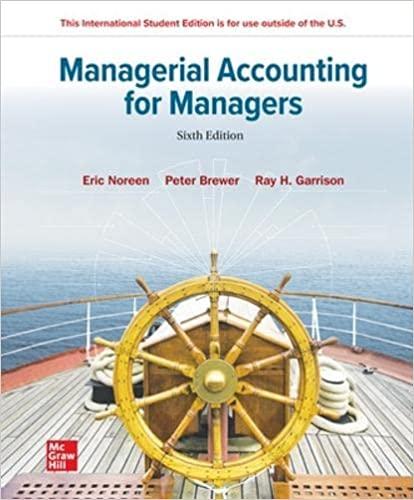



 This question did not get answered when I posted it previously, now I'm trying again. Hopefully someone could at least help me with part of this question, (although i would prefer to have it answered in full)
This question did not get answered when I posted it previously, now I'm trying again. Hopefully someone could at least help me with part of this question, (although i would prefer to have it answered in full)
Finch Cola Corporation produces a new soft drink brand, Sweet Spring, using two production departments: mixing and bottling. Finch's beginning balances and data pertinent to the mixing department's activities for Year 2 follow: Accounts Cash Raw materials inventory Production supplies Work in process inventory (410,000 units) Common stock Beginning Balances $ 46,100 14,800 100 49,200 $110,200 1. Finch Cola issued additional common stock for $56,000 cash. 2. The company purchased raw materials and production supplies for $34,480 and $700, respectively, in cash. 3. The company issued $37,210 of raw materials to the mixing department for the production of 600,000 units of Sweet Spring that were started in Year 2. A unit of soft drink is the amount needed to fill a bottle. 4. The mixing department used 2,100 hours of labor during Year 2, consisting of 1,900 hours for direct labor and 200 hours for indirect labor. The average wage was $9.30 per hour. All wages were paid in Year 2 in cash. 5. The predetermined overhead rate was $1.60 per direct labor hour. 6. Actual overhead costs other than indirect materials and indirect labor for the year amounted to $920, which was paid in cash. 7. The mixing department completed 700,000 units of Sweet Spring. The remaining inventory was 40 percent complete. 8. The completed soft drink was transferred to the bottling department. 9. The ending balance in the Production Supplies account was $540. Complete this question by entering your answers in the tabs below. Req A and B Reqc Req D Determine the number of equivalent units of production. Determine the product cost per equivalent unit. (Round "Cost per equivalent unit" answer to 2 decimal places.) a. Equivalent units b. Cost per equivalent unit Complete this question by entering your answers in the tabs below. Req A and B Reqc Req D Calculate the total cost allocated between the ending work in process inventory and units transferred to the bottling department. (Round intermediate calculations to 2 decimal places.) Cost Allocation To the bottling department To ending work-in-process inventory Total allocated cost Required a. Determine the number of equivalent units of production. b. Determine the product cost per equivalent unit. c. Calculate the total cost allocated between the ending work in process inventory and units transferred to the bottling department. d. Record the transactions in T-accounts. Complete this question by entering your answers in the tabs below. Req A and B ReqC Req D Record the transactions in T-accounts. (The cash expenditures in events No. 2 and No. 4 should be combined into a single amount in the cash account for each event. Round intermediate calculations to 2 decimal places.) Cash Raw Materials Beg. bal. Beg. bal. End. bal. End. bal. Work in process Mixing Work in process Bottling Beg. bal. Beg. bal. End. bal. End. bal. Manufacturing Overhead Production Supplies Beg. bal. Beg. bal. End. bal. End. bal. Common Stock Beg. bal




 This question did not get answered when I posted it previously, now I'm trying again. Hopefully someone could at least help me with part of this question, (although i would prefer to have it answered in full)
This question did not get answered when I posted it previously, now I'm trying again. Hopefully someone could at least help me with part of this question, (although i would prefer to have it answered in full)





